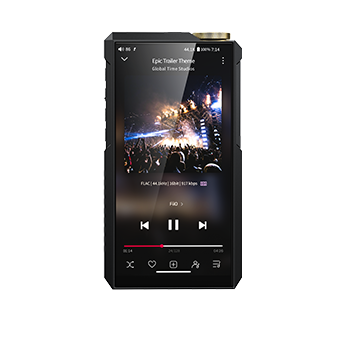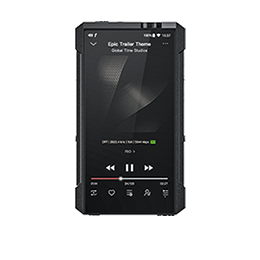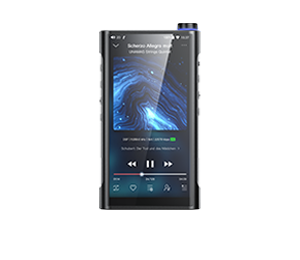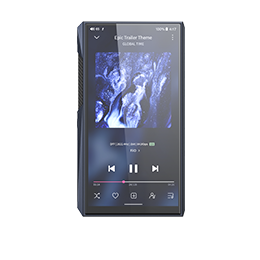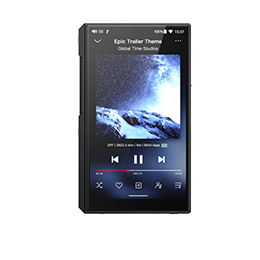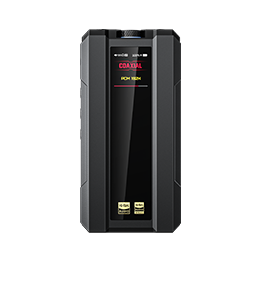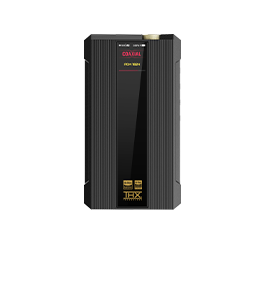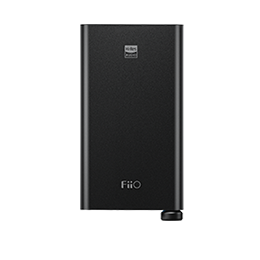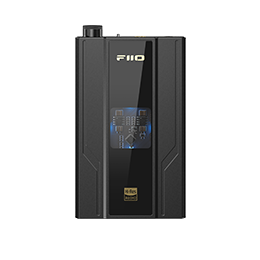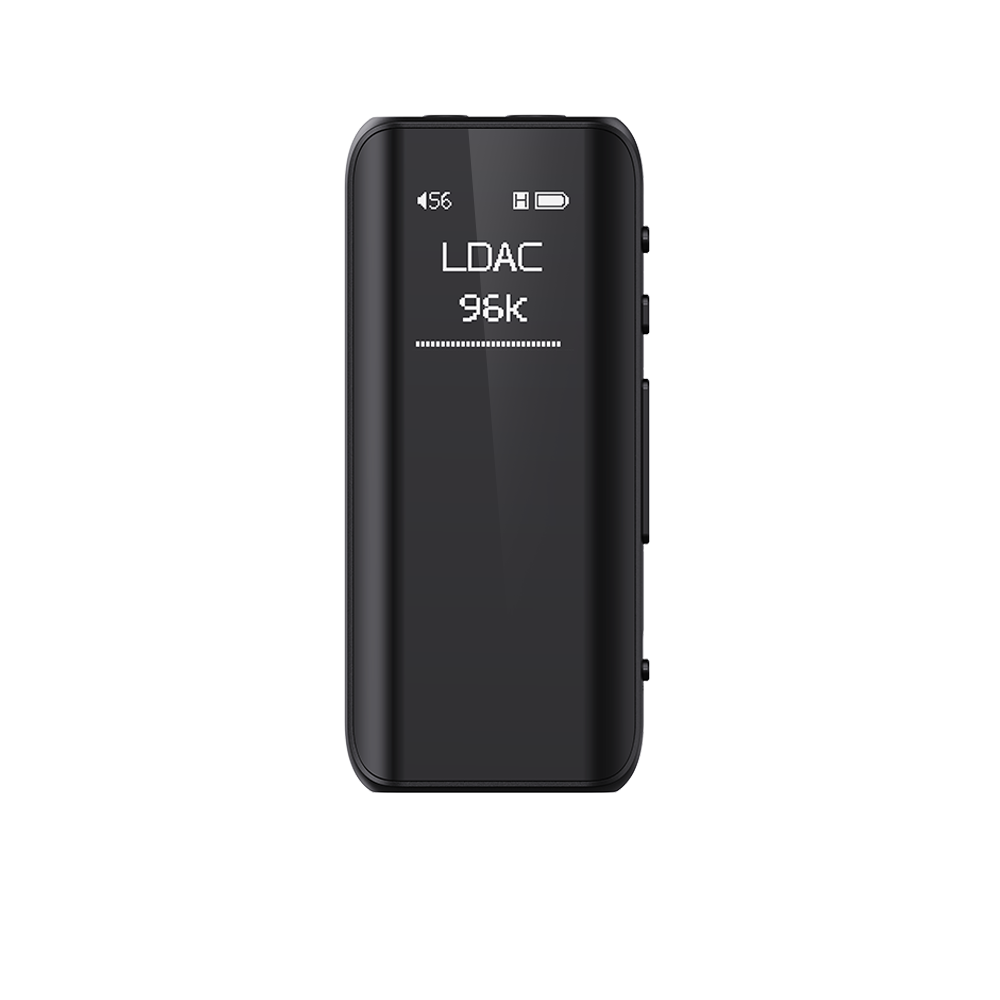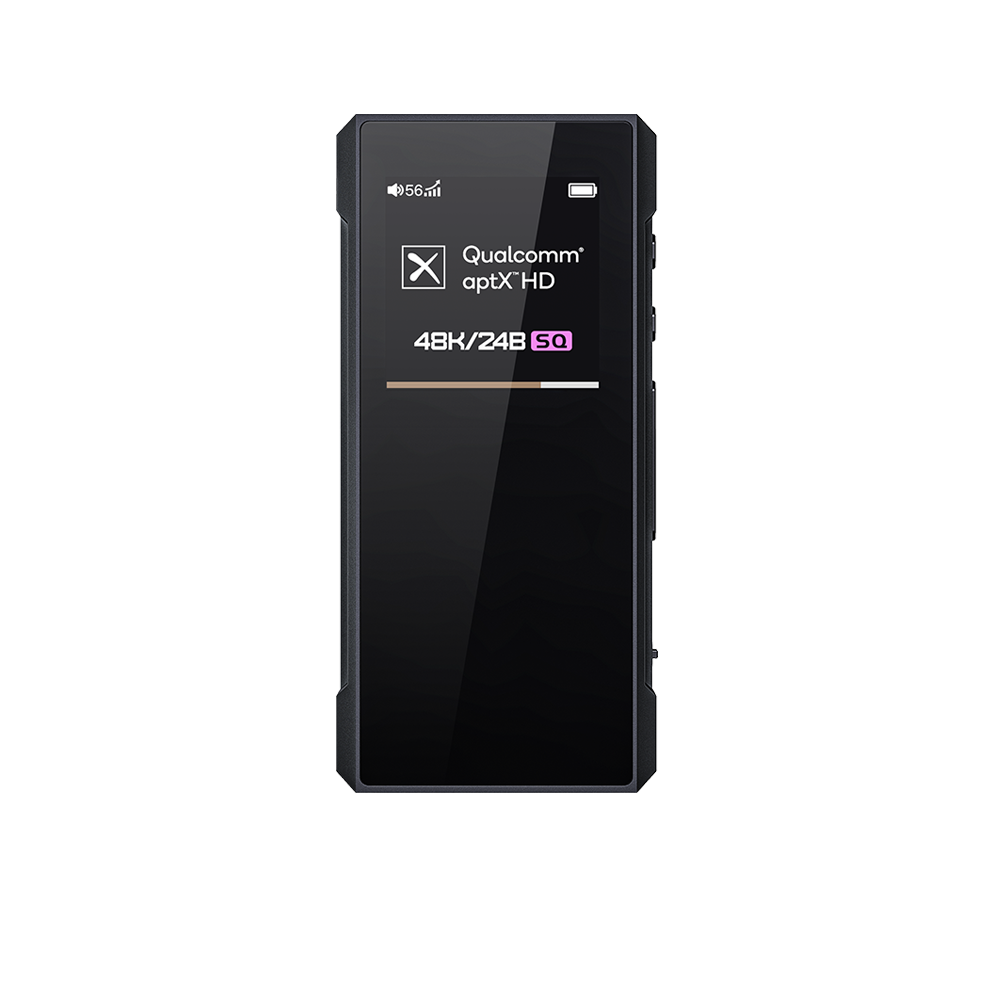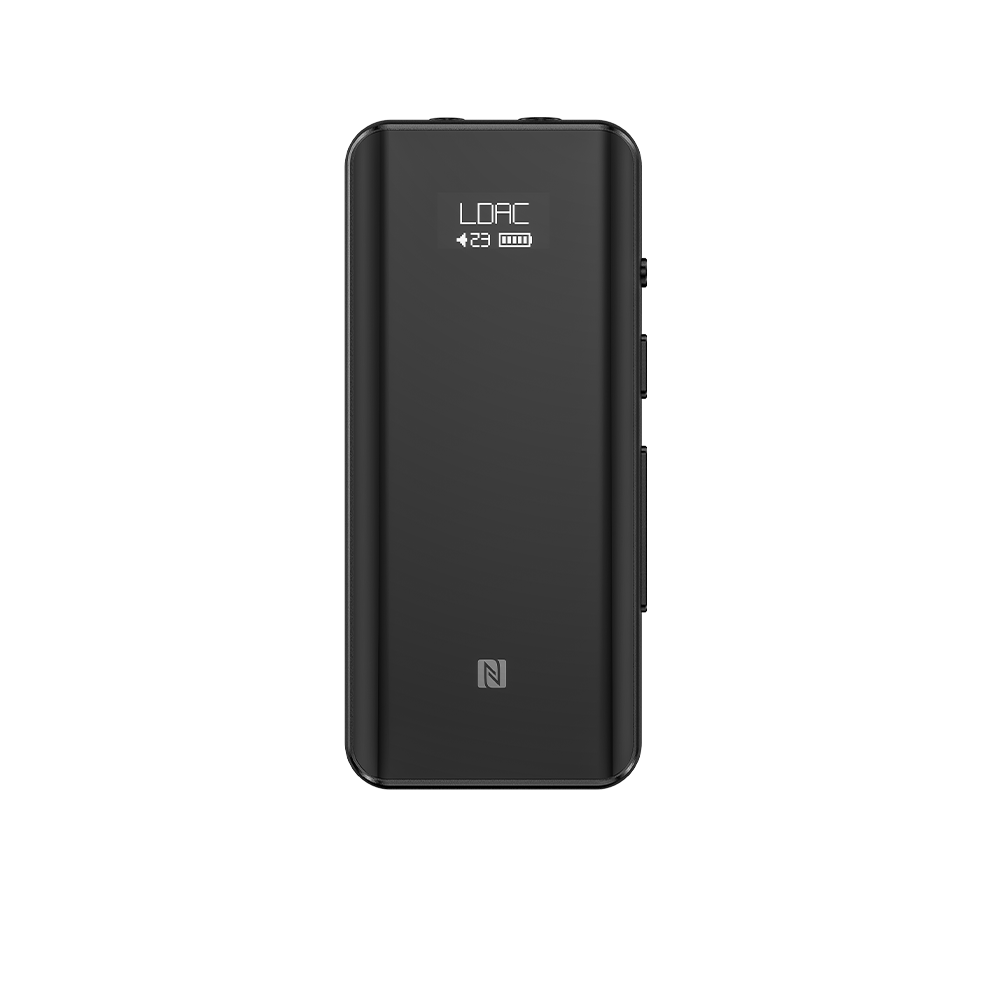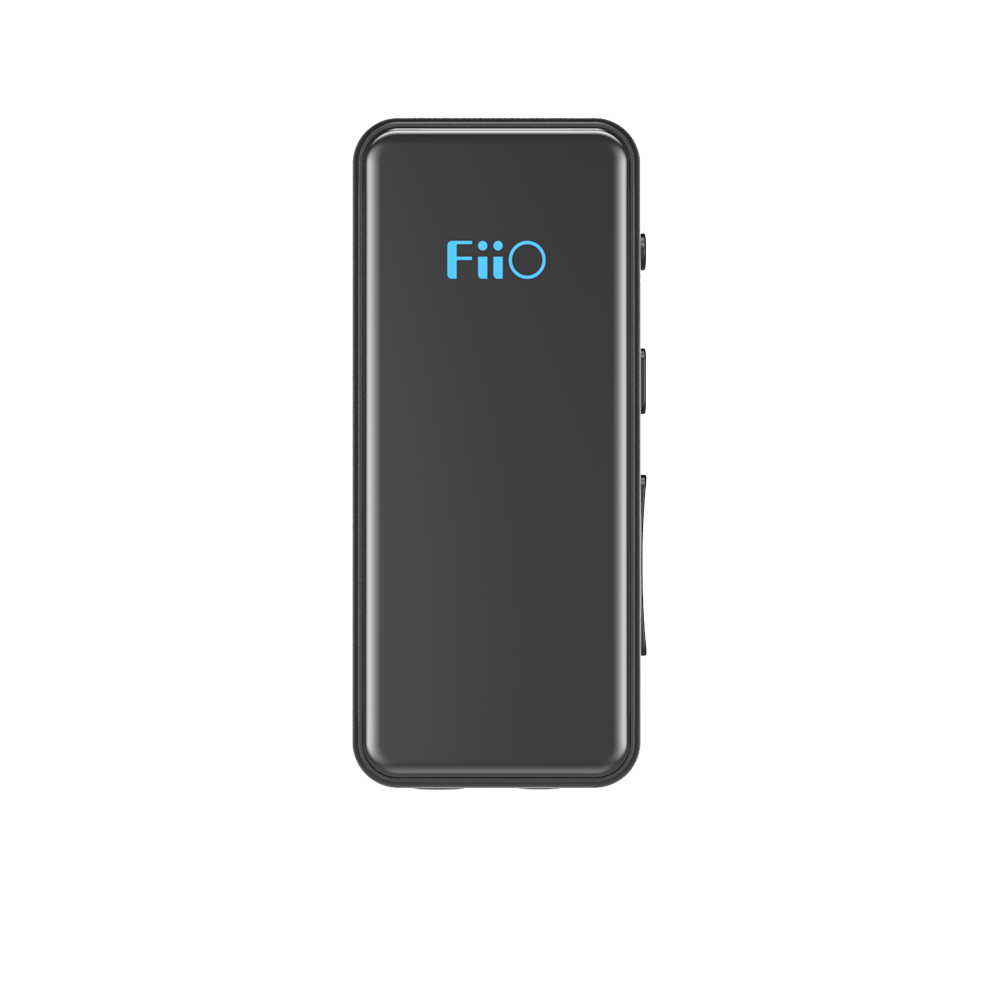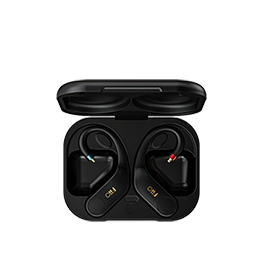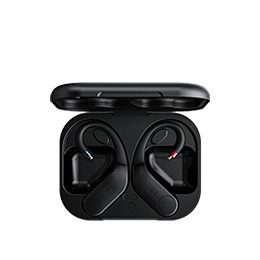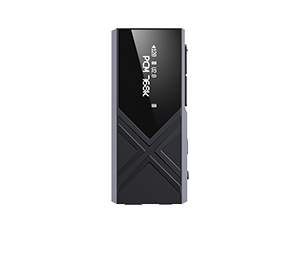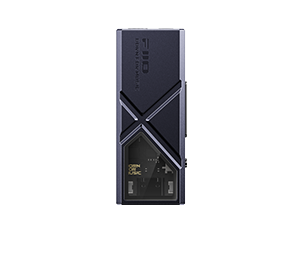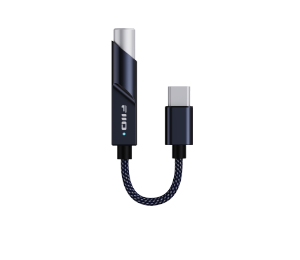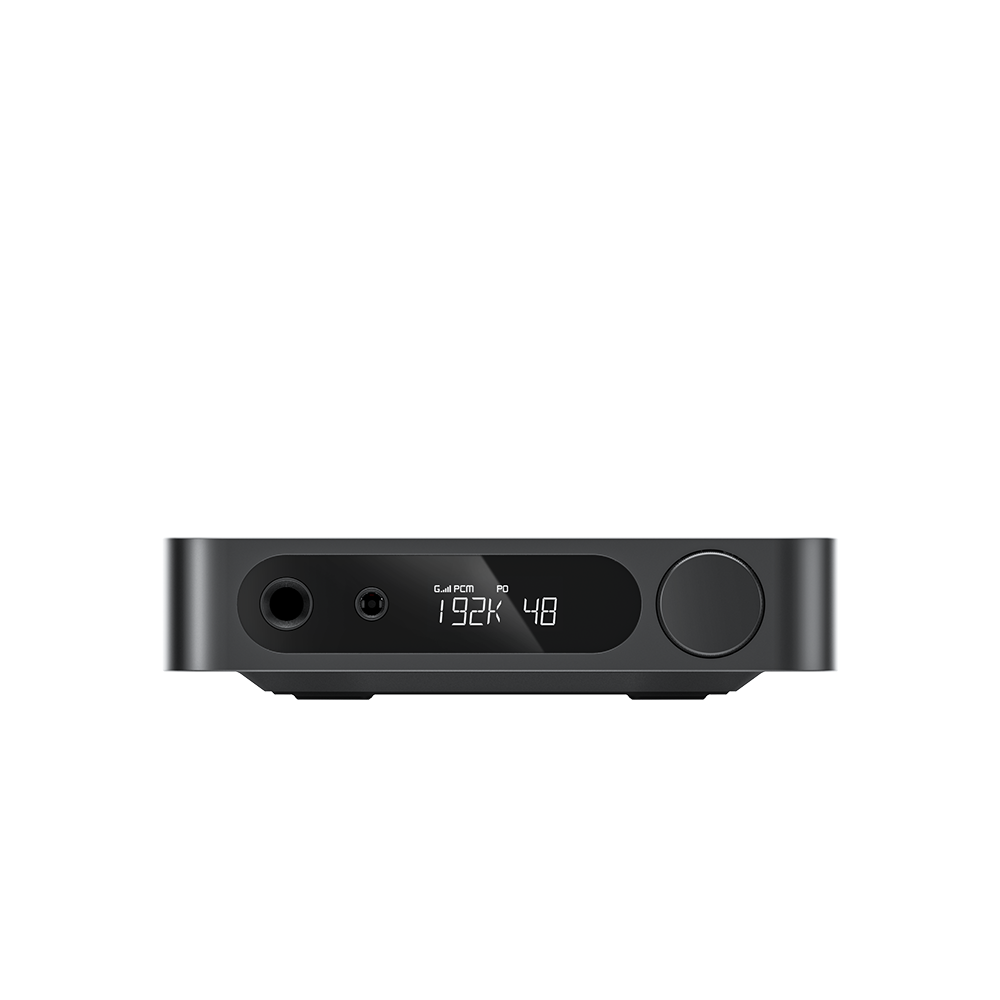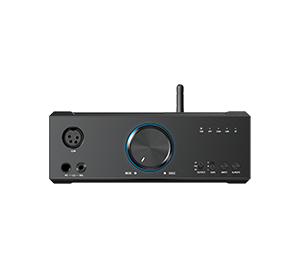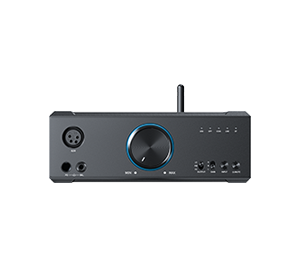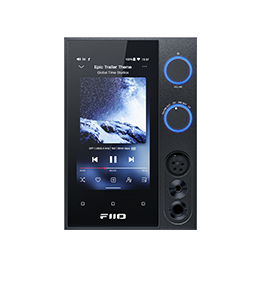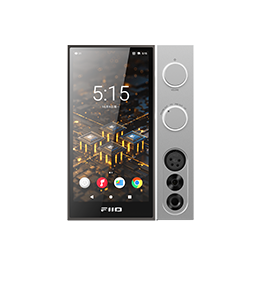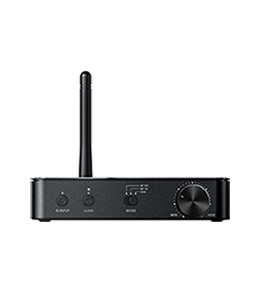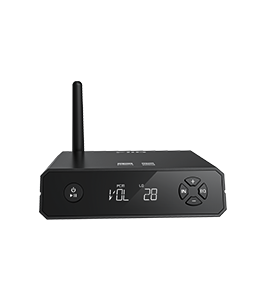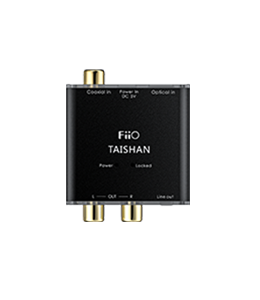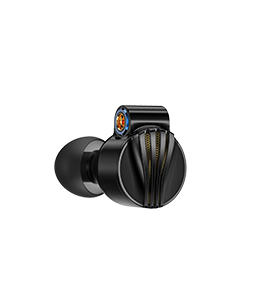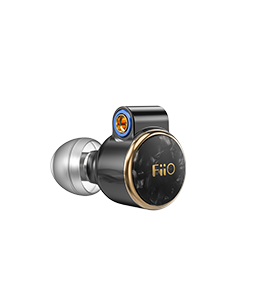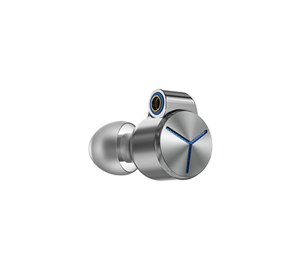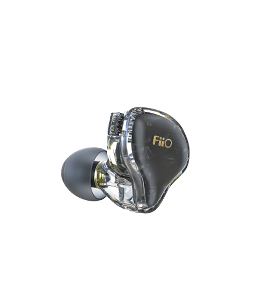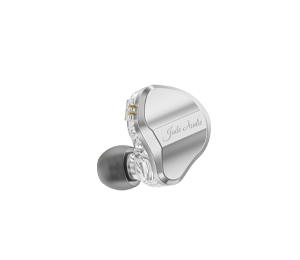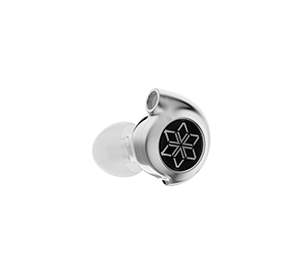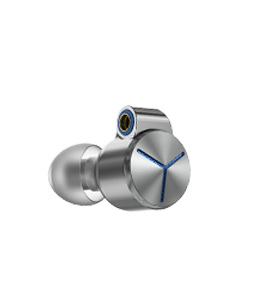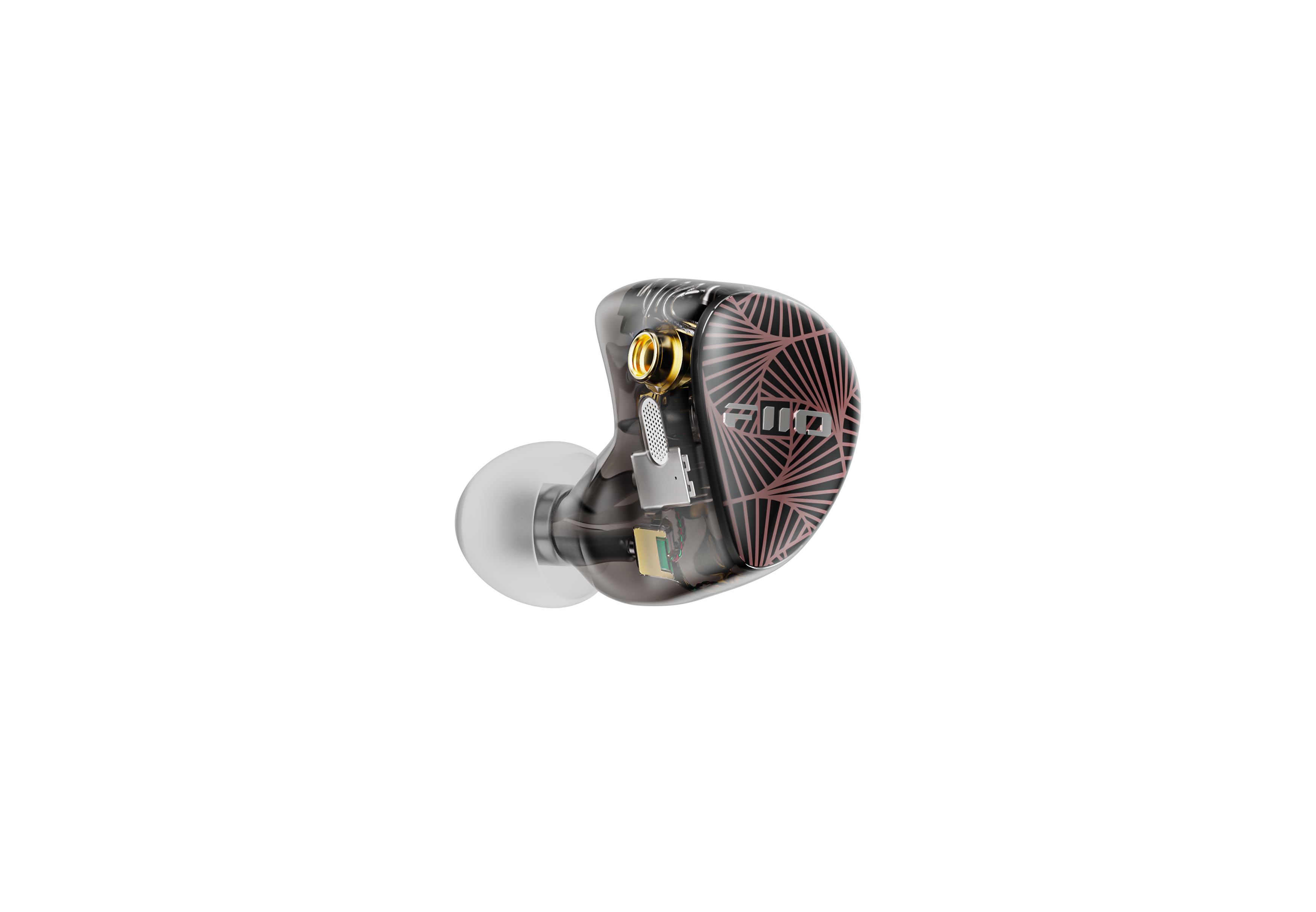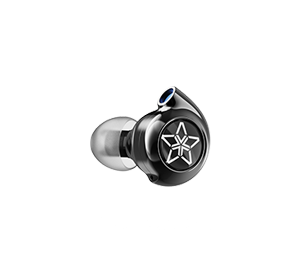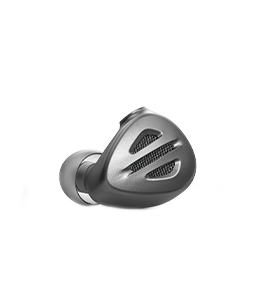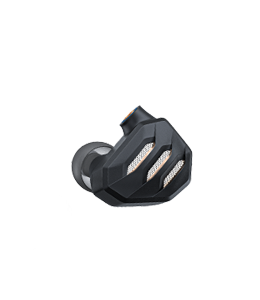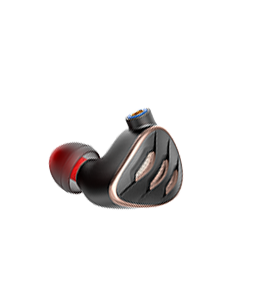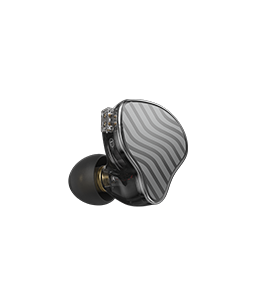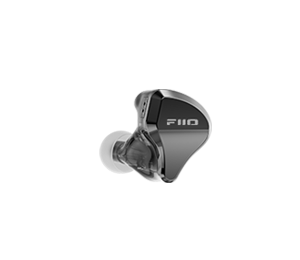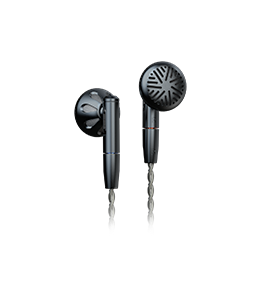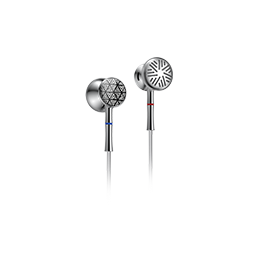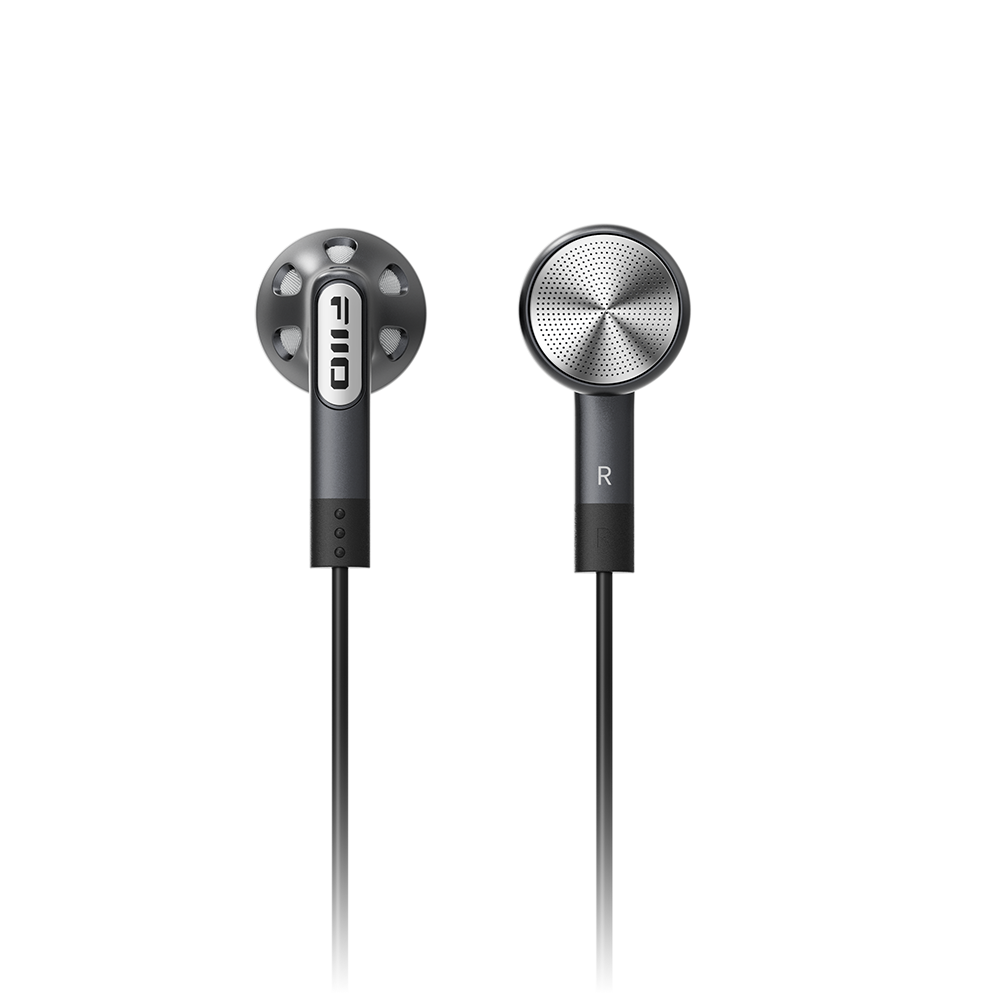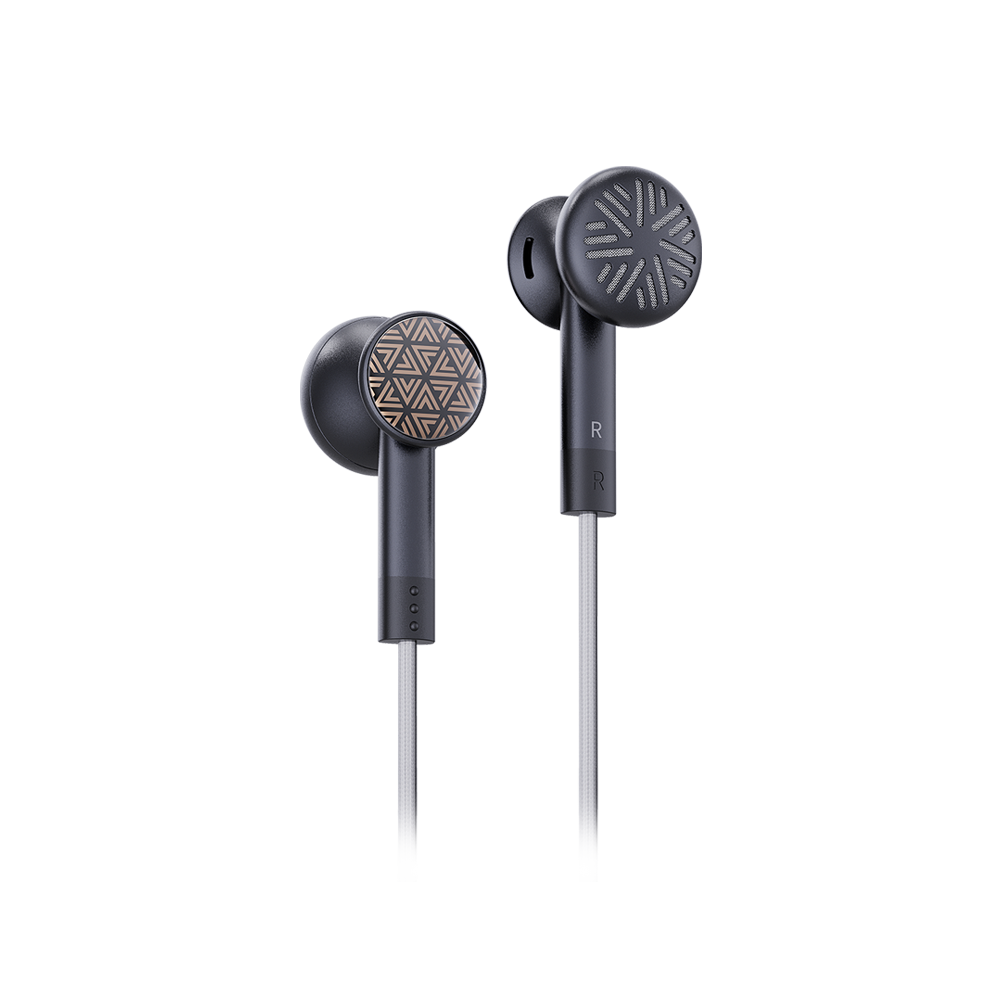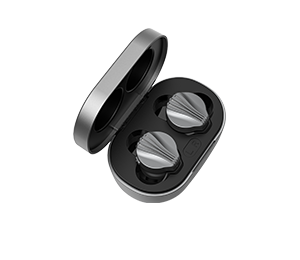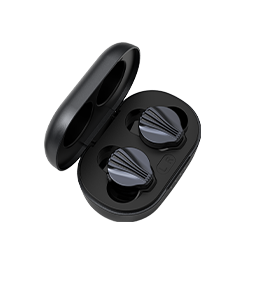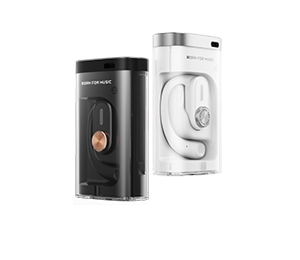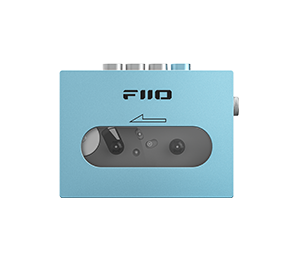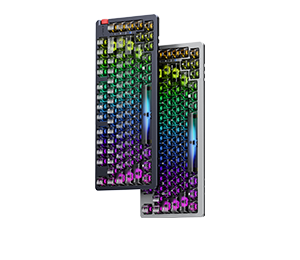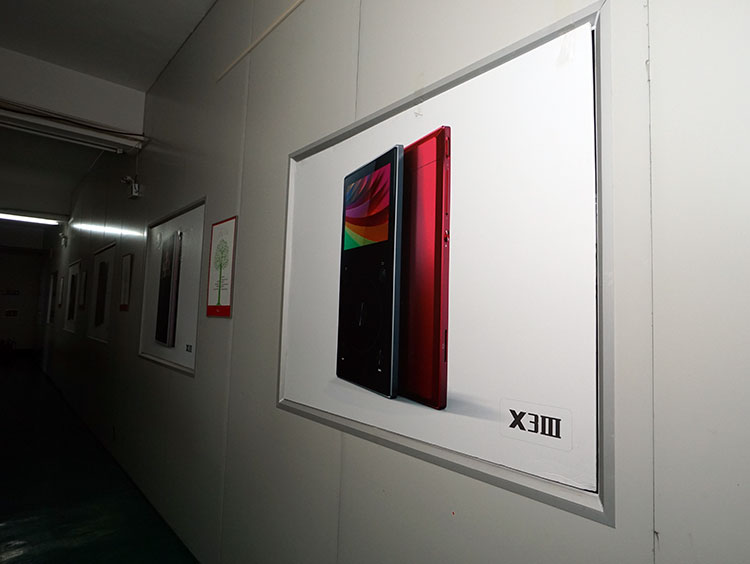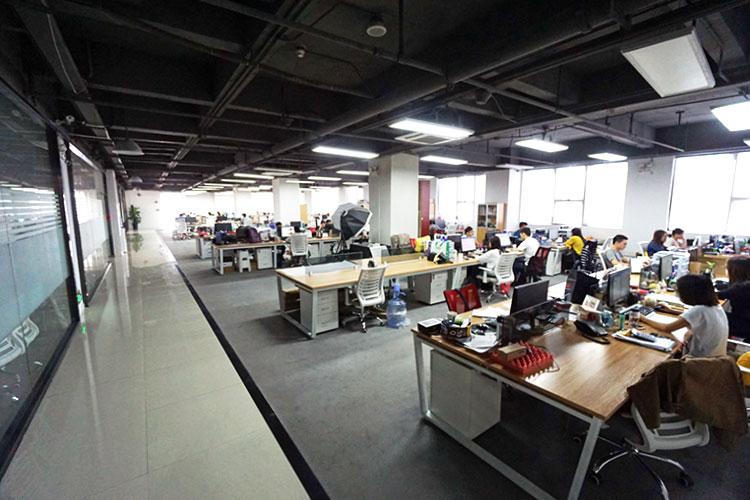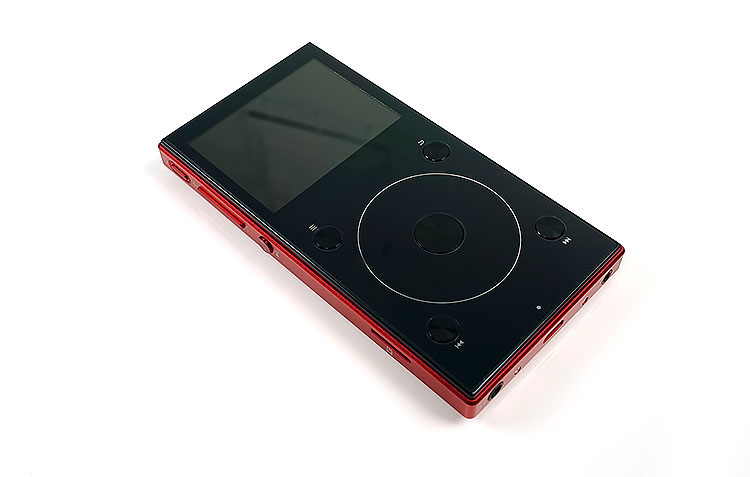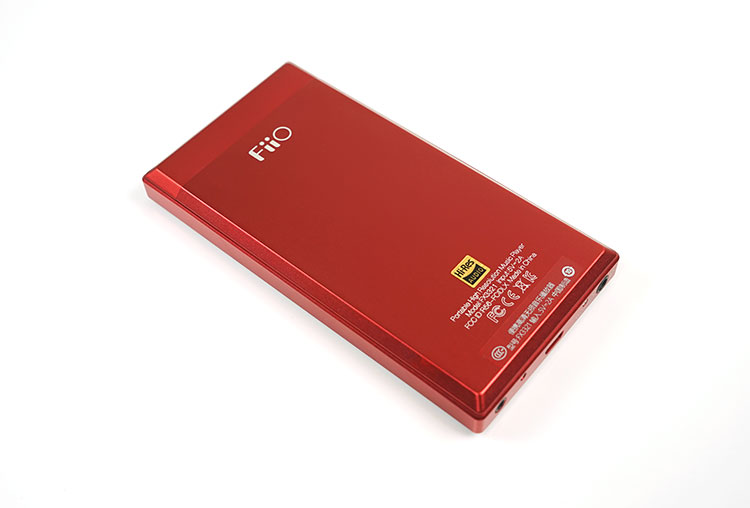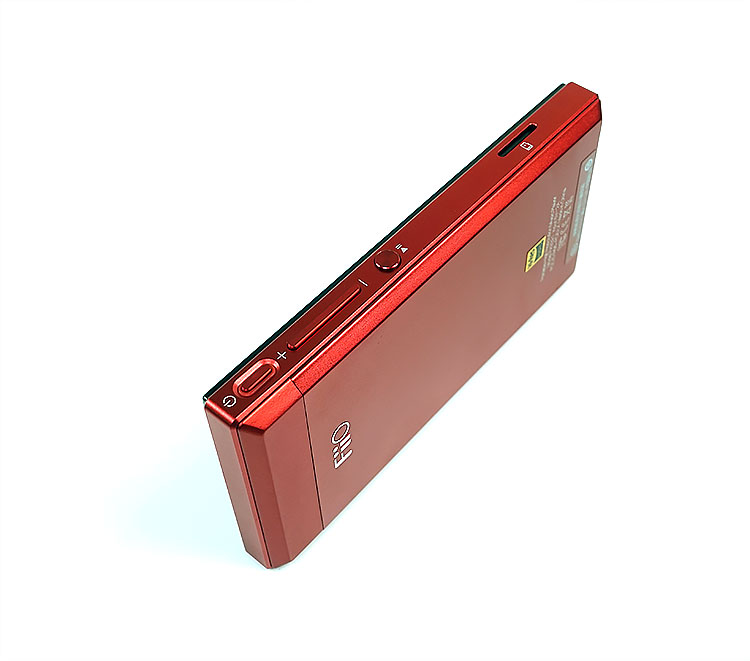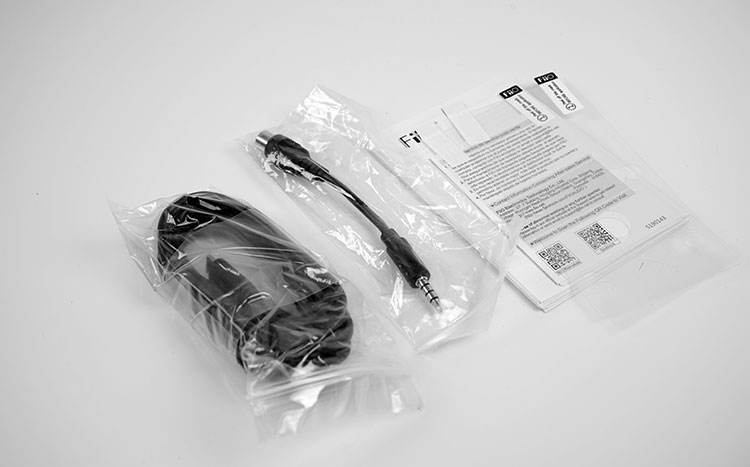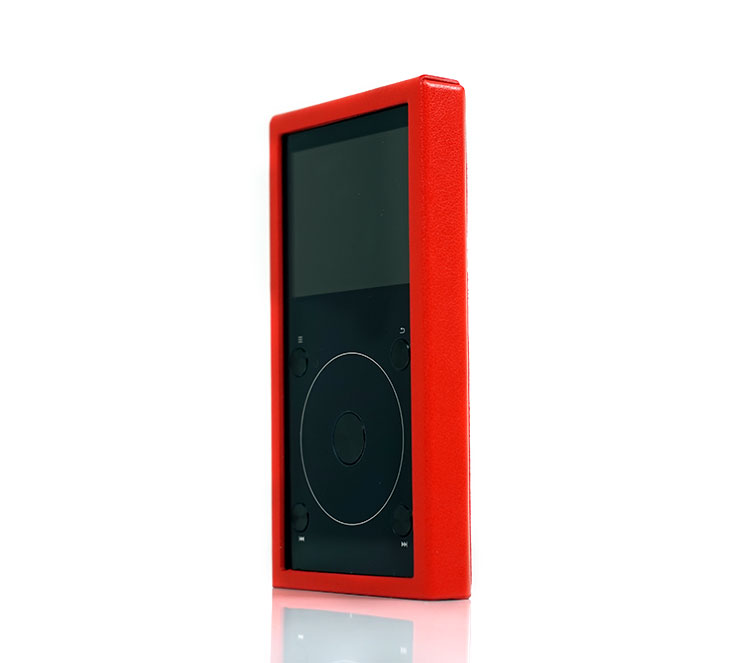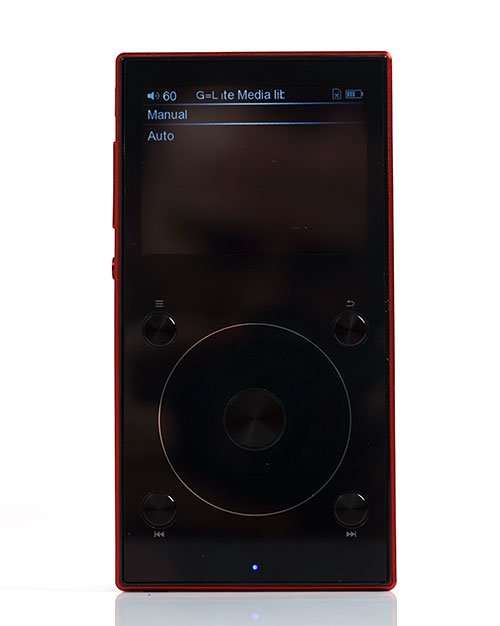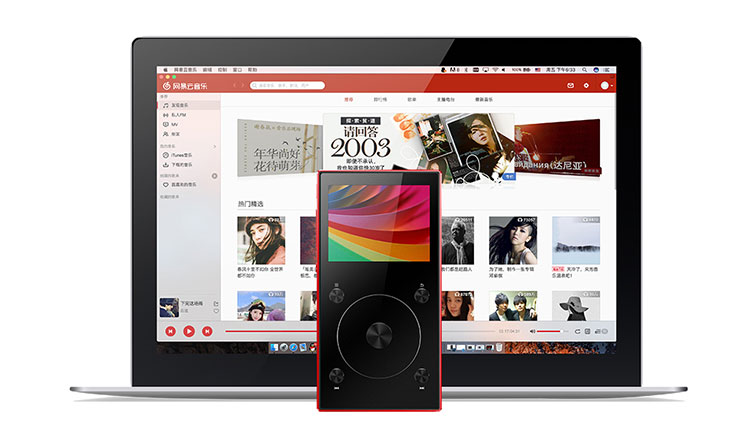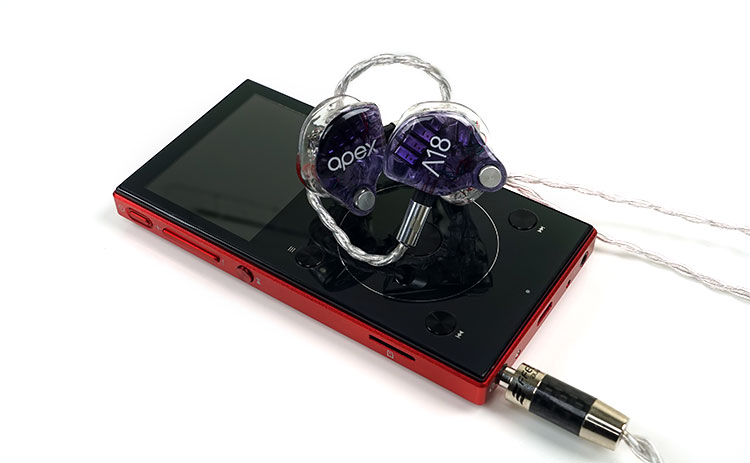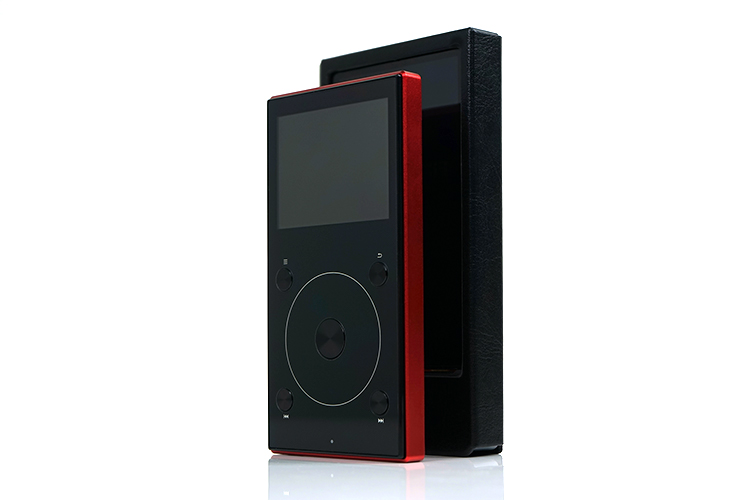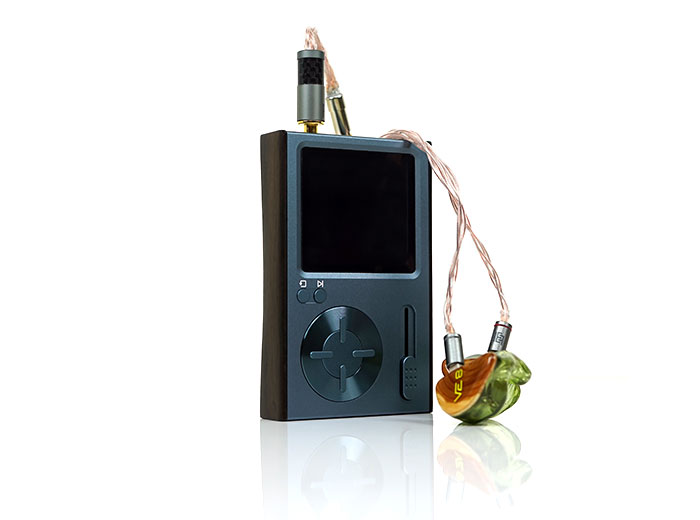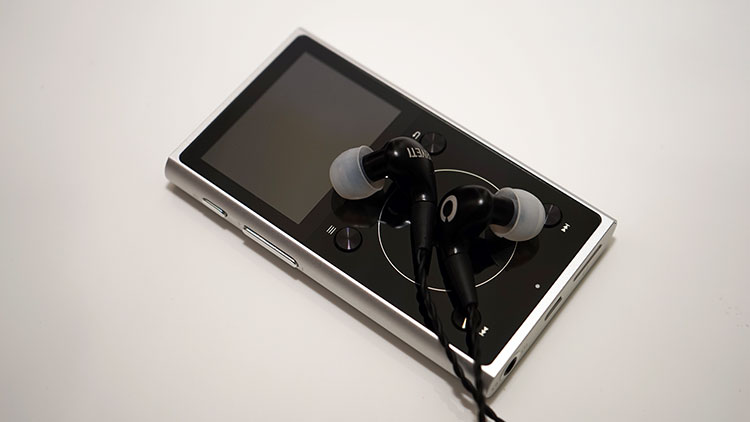FIIO X3 MARK III REVIEW
The launch of the $199.99 X3 Mark III from FiiO in the last quarter of 2017 continues the Infinity Sound theme of products initially revealed to the public that summer.
Alongside the X7 Mark II, FiiO F5 and F9, FiiO made a big push for increased performance using their tried and tested value for money message that has served them well down through the years.
It also marked a new stage in their own in-house R&D capability with the expansion of their proprietary Linux OS where once HiBy Music reigned supreme. Previously the OS was used in a gingerly fashion with the X1 2nd Gen. Mixed results ensued.
The X3 was their initial DAP. This was the media player that initially gave them so many problems but turned out pretty decent back in 2013. The X3 Gen 2 was actually quite well received at the time with plenty of new and interesting features.
Roll on 2017 and to some extent, the X3iii is their most advanced non-touch DAP launch yet with some great features. However, it could also be their most puzzling to date given the foundation of everything good on the X3iii is built on a fairly dated processor.
Background
The Legacy
When I spoke to James, one of the Co-owners of FiiO on our visit to their HQ in Nov 2017 he made special mention of the X3 DAP legacy, calling it one of their key “growth” products.
“The X3 was primarily focused on decoding hi-res music, unlike other competitors. In 2013 we restarted the project with HibyMusic for the X3 as our main OS. The previous work completed allowed us to speed up the project with Hiby with a launch at the end of 2013. X3 was advanced at the time with hi-res capability. It was very portable, delivered good power and had a long battery life.”
Fun fact for those who still have the X3 but the primary hardware interface on the front panel was in fact modeled after the Sony PCM-D100 pro recorder interface. I love that big brick of a recorder as a DAP in its own right also.
100% In-House
The recent split from HiBy meant that FiiO had to basically come up with their own replacement software for the X3 series DAPs without breaking that previously known pitch of power, battery life, and portability. Yet it also had to remain competitive for their usual 12-18 month product life-cycle which has been a feature of their media player roadmap over the last few years.
Hence in the last two years, FiiO has been increasing the size of their RnD department substantially. You only have to walk into their huge open plan office to see the fruits of that long-term vision.
If there is a pitch out of that is that FiiO controls their own destiny when it comes to their DAPs. The X3 3rd gen is the first X3 developed completely in-house and manufactured 500m away in their purpose built factory. Both the DAP hardware and now the software is made in Baiyun, Guangzhou.
What Is The Pitch?
Balanced
The X3 3rd Gen is part of that Infinity sound pitch of summer 2017. Alongside the F5 and the Q1 Mark II everything was about enhanced portability and the inclusion of a balanced output or cable capability. The X3iii is no different in that respect with a balanced output to match up with the F5, F9 or F9 Pro. FiiO is pitching the balanced output as enhancing the X3iii’s staging and detail performance over the unbalanced output.
Dual DAC
The 3rd Gen X3 also marks the first time they have gone dual DAC at this price point with a pair of TI PCM5242 DAC chips, one per channel. This is combined with no less than 3 separate PCB boards for the DAC, amp and Bluetooth module in an effort to reduce any potential interference with the quality of the output.
Bluetooth
This is also the first X3 generation with a built-in Bluetooth 4.1 capable module. Previous players were a bit cut off from the universe and had no connectivity. Today’s modern DAPs, even at the budget level now have some form of connectivity and this keeps FiiO up to speed in that respect.
All New Design
Whilst it still has some core features like the scroll wheel system the X3iii is being pitched by FiiO as a lighter, thinner and much better handling DAP than the previous generations.
Build
Form Factor
Design-wise the Mark III is a huge step up from the older shape of the X3ii. It looks far more modern and slimline than the two previous X3 generations. For those that have seen, used or own a second-generation X1, the X3 Mark III form factor is very familiar. In fact, face down you could argue that the Mark III is a blown-up X1 Mark II.
It is of course much bigger, about one third bigger than the X1. In fact, its size took me quite by surprise when I took it out of the box for the first time. It is almost the same height as the X5iii only much slimmer, as slim as the X1 Mark II for that matter.
It does have a slightly straight-ended feel to its corning compared to the more rounded X1ii. The X1ii has quite a curved side panel finish. However, the cornering of the X3iii is not that sharp anyhow so it is not much of an issue.The front panel looks exactly like the X1ii only bigger. The screen is bigger, the touch wheel is bigger. However, the X3iii front panel sits behind a tempered glass finish with the aluminum frame just behind it and the screen. The X1ii frame uses the FiiO Arc design and comes right up to the top panel so it doesn’t look as seamless as the X3iii form factor from the top down.Also, the button array seems better-built on the front panel of the X3iii than the X1. They are a little steadier and more flush to the panel. The X1 buttons stick out a bit more.
Materials & Finish
FiiO has called this design a “sandwich” design with 3 components, the glass panel behind the tempered screen, the main aluminum frame and the hybrid back panel.
The back panel itself is made of two parts. The aluminum component which covers about 80% and the final 20% is a plastic component finished blending in with the back panel. This plastic component is for the BT signal. Solid aluminum can attenuate the strength of a wireless signal so plastic is used to increase its range.
You can get the X3iii in two colors, black and red. The top panel is always black in both choices so the red is really the back panel and aluminum frame only. The black version has a front and back that is black but the aluminum frame is actually a grey finish. Red has always been a color of luck for a lot of Asian communities and it looks very stylish to me personally but I have a feeling the western market will go more with the black.
Screen
The X3iii uses a 2.3″ 320x240px TFT screen on the front panel. It is a non-touch screen with navigation and control through the physical buttons and touch-scroll wheel below it. The type and resolution of the screen are the same as the last gen X3, however, it is slightly bigger than the 2.0″ version used on the 2nd gen unit.
It is a well-lit screen with bright clean colors, decent viewing angle also and in contrast to the X1ii it has better lighting and more complex theme coloring. The depth from the LCD to the tempered glass is not that deep which helps in terms of legibility and viewing angles.
The level of pixelation from the new OS on the X3iii screen is similar to the X1ii’s performance with slightly inferior anti-aliasing to the 2nd gen HiBy system and glass. I have seen this on a few Linux powers software systems before and is usually related more to the font choice which has stayed the same for both DAPs.
Memory
Single Slot
Like the previous generation X3 the new X3iii does not have any onboard memory. Instead, you have a single micro SD slot to the left side panel for cards up to 256Gb official.
This places on an even keel with similar price players such as the Shanling M2s which also does not use onboard and just a single micro SD slot. The Colorfly C10 has onboard 32g but the SRP is $100 higher at the time of writing. It also has only one microSD slot. For reference purposes, the M3s from Shanling does not have onboard memory either but both Shanling DAPs have bi-directional BT and OTG services.
No OTG
What happened to the previous generation OTG support for this X3 generation? Sadly, I tested a few flash sticks and OTG cables but nothing came up. This one seems to have been silently dropped in favor of some different features. I cannot find any technical or marketing data that will suggest OTG will return which means the X3iii is limited to whatever you put in the memory slot.
Battery
The X3iii uses a 2350 mAh Li-polymer battery which is slightly smaller than the 2600mAh battery inside the 2nd gen X3. The X3iii will give you around 10 hours compared to the rated on a paper spec of 11 hours on the older version. That is actually not bad considering the additional features on the X3iii.
However, once you start using those additional features extensively you will find it will drop a bit more to under 10 hours. Screen brightness, the screen on, Bluetooth on and balanced output will reduce the life cycle by 1-2 hours. It was pretty much the same scenario on previous generations so I would not consider it a negative, particularly when you are running a dual DAC and a triple PCB board design underneath.
Deep Sleep
The X3iii has retained the deep sleep functionality of the previous gen which is a very useful feature. Deep sleep on the X3iii will give you up to 19 days of instant-on capability in standby mode which is pretty darn good.
Now that’s 15 days of not touching it so using the standby mode off and on during some playback sessions will shorten that spec in real-world usage but it should give you a few days at least from my experience using the X3 Gen 2 feature.
Charging is a little faster at 3 hours vis USB compared to the 3.5 to 4-hour cycle of the older gen 2 X3.
Inputs & Outputs
Balanced
This is where FiiO has pushed the boat out for a sub $200 DAP. All the inputs and output are housed on the bottom panel as is the case with the X1 2nd gen. The top panel is flush metal only. You retain the3.5mm digital and line out of the older 2nd Gen DAP but you also get an additional balanced 2.5mm TRSS on the opposite side.
Previously the line and digital outputs were houses in a dual purpose single 3.5mm output. Switching was done through the OS controls in settings. On the X3iii you now have a 3.5mm jack with tri-functional capability. It now includes 3.5mm unbalanced for headphones and IEMs plus lineout and coaxial.
You can still control the mode of output via the settings menu and a small icon will tell you which mode is currently selected in the top bar on the screen.
Micro USB
FiiO is sticking with micro-USB for the X3iii USB socket. I see no harm in that, quite a lot of my devices still use the format and there is no sign of it being phased out currently. I do hope the next gen will switch to USB-C which is a format I am fast preferring for ease of use alone. The USB port will dual for data transfer and charging as well as mount your inserted micro-SD card on a PC or Mac. It can also be used to activate the USB DAC function for Windows platforms in sync with FiiO’s USB drivers.
Physical Controls
Touch Scroll
Since it non-touch based there is a strong emphasis on physical buttons. The new touch scroll wheel seen first on the X1 2nd Gen is again deployed in the X3iii but this time it is bigger and to my mind slightly more accurate and with a quicker response. On the X1iii I got about a 1cm thumb movement either side before the menu moved from icon to icon on the home screen. On the X3iii I am getting maybe 25% less distance making it the more accurate of the two.
One nice little feature of the new touch scroll wheel not found on the X1 2nd gen is the software control of the level of sensitivity in the setting menu. It has 3 settings, low, medium, and high. I recommend low, it makes everything much faster than the X1’s version.
Front Panel Buttons
On the outside to the four corners, you have the multi-function buttons for playback, navigation and menu call-up. They are slightly better in terms of finish to the X1 2nd gen. They are also housed a little closer to the tempered glass panel and do not look quite as raised as before.
Multi-Function Button
On the left panel below the volume rocker, you also have a new multi-function button. There are a number of commands associated with this button. During playback, it will play and pause as well as fast forward if pressed down for a longer period.
A double click seems to also move it forward to the next song also. Further button mashing will allow you to change themes as well as bring up info on the song being played and your playlists.
Power & Volume
Above the multi-function button, there is a simple slimline volume rocker and FiiO new power button which is more rectangular than circular and duals as power on and off as well as controls whether to turn the LCD screen on and off. Note it does not have variable color schemes for battery life. You will find the batter life indicator in a small LED diode at the bottom of the front panel.
Accessories & Packaging
The X3iii packaging is similar to the of the X1 Mark II with a ‘white on black’ small cardboard box and a professional print out with key features outlined at the back. Inside you get quite a good array of accessories including a silicone case, leather case, coaxial adapter, USB cable, screen protectors and a manual.
The case will either be red or black depending on the color scheme of your X3iii. In this sample, it is the red case. It is fairly similar in design to the X5iii and X7ii but the materials used are a little cheaper than either of those two DAPs cases.
There are no gaps for the button arrays on the left but there are outlines of where they are and the material is soft enough to be able to easily use the controls. I can’t see the X3iii ever sliding out of this case despite the open bottom end. It seems rigid enough to hold everything in place.
Page 2: DAC and Software Performance
Internals
DAC
Dual DAC
This is one of the big steps forward for the X3 series. The X3 Mark III now comes with a dual DAC implementation using TI’s PCM5242 chipsets. FiiO has also separated the PCB board design to contain the DAC, BT operation, and amp stages separately from each other to reduce interference.
Decoding
On the previous X3 2nd gen they used a single Cirrus Logic CS4398 DAC chip. Now the CS4398 is the same chip used by the likes of Colorfly on the C10 and it sounded very good indeed on both it and the older X2 2nd gen. Like the C10, the 2nd gen decoding was pretty good with rates up to 24-bit/192kHz and DSD128 native decoding.
The dual PCM5242 on the X3iii should offer a little bit better dynamic range capability than the previous single implementation. However, the numbers are not a significant step up on the CS4398 with similar decoding capability limited to 192kHz/24bit as it was in the X2ii. The DSD max decoding rate has also dropped from a previous DSD128 to DSD64.
Now commercially I find the majority of hi-res to be either PCM 24BIT/192k or DSD64 and rarely do I come across DSD128 or DSD256 but I do have some. That is why I find it curious that FiiO capped it at DSD64. Possibly to get the dual chip implementation in under budget is my best guess.
Processor
This is the Achilles heel of the X3iii though I have to say not as much as it was on the X1 2nd Gen. The processor is the Ingenics JZ4760B processor chip with a SOC OS based on Linux. All the boards in the Jz47xx series consist of an XBurst processor, which is a MIPS processor clocked at 240->400Mhz. This is the same chip used in the X1 2nd Gen and the previous generation of the X3.
It is not the fastest processor out there though I think FiiO have done a good job of optimizing the coding of the OS as it is a bit faster than the X1 2nd Gen, particularly on scanning. That being said it is the bottleneck in the performance of this system as it is an old chip by today standards.
Amp
Opamp
FiiO has inserted an OPA1622 based amp stage into the X3iii. This is another product from TI and is actually quite new being launched only last year. Impedance matching is not super low, around 1-1.5Ω for both its balanced and unbalanced outputs. That should be low enough for most efficient IEMs to sound “correct” and true to their tuning.
Power
Output power is reasonable though not outstanding and is more suited to powering IEMs and efficient headphones than anything more demanding. In unbalanced, you will get ≥ 160 mW (32 Ω/THD+N<1%) and balanced at a similar weighting will get you ≥ 190 mW.
It is a modest boost but a boost nonetheless by going balanced. Certainly, it has more power than the 80mW unbalanced output of the Colorfly C10 and slightly better SNR numbers to boot. However, compared to the older X3ii, the power output of the X3iii has dropped a little from the >200 mW rating on the previous release.
Dynamic Range
The numbers do also suggest a significant step in dynamic range over the older X3ii’s numbers with an increase by up to 6db (107db versus 101db) on the line-out performance. Perhaps a validation for the dual DAC implementation. My assumption here is the power has been dropped a little to bring in a wider range of efficient IEMs that simply do not need a high level of power and prefer to focus instead on detail and dynamics.
Software
Platform
The X3iii uses a SOC Linux variant built from the ground-up by their in-house software programming team. It looks very similar to the previous HiBy UCOS of the Gen 2 but this time FiiO own and update it 100%.
FiiO first tested this OS on the X1 Gen 2 last year and for me, it was hit and miss. I understand it was designed to mimic the features of the old UCOS setup, however, it was very slow and ponderous. The X3iii is a good deal faster though by modern standards and FiiO have expanded the OS to deliver a much more feature-rich experience than before.
New Features
That being said coming from the X2 2nd gen is not such a huge step into the unknown with the X3iii Linux platform. The UI is almost the same with that familiar interplay between the scroll, button, and screen. There are however some nice new features in this version of the OS for this generation.
Bluetooth
So what is totally new? Well for one the new BT option in the system settings is probably the biggest new menu option on the X1 2G. You can turn it on or off via the system menu and after a few seconds, you will see the Bluetooth icon appear in the notifications top bar.
The option to connect and review your existing connections are right below the BT on off menu option. This gives you an almost system like control over playback, especially when combined with FiiO’s own RM1 remote and the DK1 multifunction dock.
In-Line headphone controls
Like its smaller sibling, the X3iii will facilitate cables with in-line controls. Might not seem a big deal but when you realize not all DAPs out there do that, such as the HiBy Music R6 then it does seem relevant to mention it. Given its portability and attraction to IEM users a non-Android in-line control feature is pretty valuable.
Scroll Wheel Sensitivity
This is a massive feature for usability purposes in the OS of the X3iii. Inside the systems menu, you will find the three settings under the title Rotary sensitivity. You have high, medium and low. since the OS is quite list based changing it to high sensitivity reduces the margin of error in scrolling as well as generally make everything much snappier and easier to navigate.
The previous implementation on the X1 2nd Gen had no such settings and if I had to guess was set to medium or low sensitivity. As a result, the experience was very slow. Given both have the same processor you have to feel a lot of the criticism of the speed of the X1ii lay in the response rate of the touch scroll wheel.
Media Management
File Browser
You can browse and manage your media in the same manner as before via category and folder browser. For those with good file and folder management and just want to get going then the folder browser is fast and efficient for quick drill downs.
Personally, I prefer this method to using the Category method simply because FiiO has yet to produce proper drill down category browser in categories such as genre which gives me a flat list of about 500 songs per genre rendering browsing rather unuseful. I still believe it should be Genre – artists – album – songs but this is a dance I have been doing since the very beginning.
Category
Scanning on the new X3iii was much faster than the X1ii. Given they have the same processor I can only presume better optimization of the code from FiiO. It is still sluggish by mid-fi DAP standards taking 5 minutes and 42 seconds to update the media library with 2544 16BIT 44.1k FLAC files compared to 1 minute and 20 seconds on the X5iii.
Still, that’s over 50% faster than the X1ii so that is progress. The tagging library though is pretty accurate on the X3iii. Most if not all tracks were correctly classified. Much better tag engine than the Mango OS for sure. You can browse via the usual titles, artist, song, genre, favorites, playlists and recently played.
Settings
Play
As before you have two levels of settings on the X3iii, Play and System Settings. Play will control functions such as gain levels, volume, gapless, channel balance, and line-out mode.
The play settings menu is also where you can tweak the multi-function button to focus on a particular aspect of the OS. You have four settings to switch to, playback controls, theme selection, ability to jump from folder to folder and bring up the EQ for tweaking.
System
System settings on the X3iii are all about the environmental controls as well the ability to update your media library manually or automatically. You can also access the BT functionality from this menu including pairing with devices.
This menu also allows you to control the output functionality of the jacks including line-out fixed or variable, USB mode (DAC or storage) and the type of SPDIF output decoding, DoP or D2P. You also have control over the level of detail you want to be displayed during playback including cover art, lyrics, and the file name.
The theme selection has also been upgraded on the X3iii with no less than 6 choices from the systems setting menu. You can also opt to increase or decrease the size of the font which for a screen this size might prove invaluable to some uses.
Connectivity
Bluetooth Performance
The X3 Mark III can now operate wirelessly with both headphones and transmitting audio to other setups such as car audio as well as integrate with FiiO’s own BT remote control, the RM1. The previous X3 Mark II had no such wireless connectivity.
I also love the concept of the in-vehicle mode where the BT signal powers down the X3iii when the car itself is turned off and when you turn on the engine (and the audio system) the X3iii powers up again. A very nice feature indeed.
No AptX
AptX is missing as it was on the X1 2nd Gen. Instead we have the “standard” BT 4.1 protocol inside the X3iii. What does this mean?
The lack of aptX is due to the inability for Linux to integrate the aptX platform into its MIPS architecture. Audio is, therefore, good but not as dynamic and uncompressed sounding as aptX and you will notice the difference if you are coming from an aptX capable platform such as the X5iii and X7ii.
Pairing and range of this BT module and implementation are much better than the X1 2nd gen though with far less dropout, greater distances by up to 3-4m and a faster bootup and pairing time.
USB-DAC
Compatibility
To activate the USB-DAC feature you have to dip into the settings menu and change the USB option from storage to DAC. Then download the USB drivers for Windows or plug and play in MAC.
Try as I might I could not get any connectivity from my Chrome Book (Asus Flip). I do know the new Q5 will work from the same Chrome Book so perhaps FiiO is using a set of drivers specific to just the most popular platforms for their mid to low-end Linux DAPs.
Performance
Apart from that, the performance was excellent using our Windows platform in the office. No issues with lag in audio dialogs and movies which used to be a thing a few years ago on previous models.
The line-out performance of the X3iii when used as a USB-DAC is even better than the second gen with a proper 1.9Vrms rating as opposed to the much weaker 1.45Vrms in the 2nd gen. If you happen to have a more powerful analog amp then the X3iii is a useful and well equipped pure DAC.
Page 3: Sound Quality and Comparisons
Sound Impressions
Tonality & Presentation
In some ways, I find the tonality and presentation of the X3iii a slight return to the original X3 only just that more resolving and refined sounding.
I always found the X3ii to be the drier and the more neutral of the two with a balanced, lean and clean presentation though with a bit more single-ended power. The X3iii is a fuller, rich sounding presentation with a more planted low end and a stronger even harmonic bias in its timbre. Simply put it is much smoother but more dynamic sounding than the older X3ii.
In my X2ii review, I mentioned how the X3ii lost a bit of the original’s lusher timbre and top-tapping PRaT. In some ways, the X3iii has brought back that richer warmer timbre but retained and improved on the clarity of the X3ii’s presentation. It also massively upped the resolution over the X1 2nd gen. I found the X1 2nd gen to be well balanced for the budget DAP but compared to the X3iii you can immediately pick out the superior detail and layering the X3iii can deliver.
I find that the biggest presentational emphasis of the X3iii is in its low-end and vocal presence with a slight lower treble emphasis but not as dominant as, say, the M3s. It does push out vocals a bit more than the X1 2nd gen for sure and its planted warmer bass response will stand out a lot more than previous iterations.
Bass
Heavier hitting than previous generations of the X3 but also tighter sounding. It takes the fullness of the first gen X3 but pushes it a bit further forward than the 2nd generation. The 2nd Gen will sound a bit leaner in comparison and more neutral in positioning.
Compared to the likes of the M2s it is also much better defined and not quite as warm sounding as the softer M2s low-end. The X3ii bass response is not as punchy as the M3s but it is slightly richer and may shade it slightly in sub-bass presence.
Mids
Lower mids retain a bit of the bass warmth and even harmonic bias. I wouldn’t term it as soft or overly rounded, rather just smooth and easy going with a reasonably natural sounding timbre. Instrumental layering is much better than either the M2s or X1 2nd gen and really does sound more open and dynamic in its presentation.
The X3iii does a good job with vocal presence, pushing it slightly further forward along with its lower treble. Side by side with the C10 and M3s it does, however, the positioning is slightly further back with both of these a bit more aggressive in their upper mids and treble signature.
Treble
Treble is relaxed but not rolled off. The level of detail and clarity is good but not quite as forward or as snappy as the M3s or the C10. Again, a massive step up from the X1 2nd gen which sounds a lot more muted and less resolving.
The headroom is pretty ok actually it is just not as much ‘pop’ as those two DAPs. It is much superior in both accuracy and timbre to the M2s which sounds a lot softer and less resolving.
Matchability
Power
The power rating of the X3iii is a little different in emphasis to the older generations. It is a much lower in its single-ended output than the equivalent rating on the X3ii at 160mW into a 32ohm load compared to 200mw into 32ohms. Even going balanced will leave you 10mW short at 190mW into 32ohms.
It is not as powerful as before. Mind you, the vast majority of IEMs in today’s market are rarely designed to need much more power than what the X3iii delivers so you could argue that the specs are much more IEM friendly than the older X3ii.
Noise
Except that the output is actually a bit noisier than I expected. Considering the X3iii output resistance is 1.4ohms which is not as low as the older X1 2nd gen 0.2ohm rating as well as the generally Andromeda friendly output numbers I was expecting total silence. That is not the case sadly as it does have noise.
Now I do not want to overstate the issue because it is not a huge wall of hiss but rather a generally ever-present low level of noise that you only really notice when side by side much quieter DAPs such as the M3s and C10.
It also starts to fade away once you start using IEMs at 20ohms or higher or with sensitivity ratings that start dipping to 110dB or lower. For example, the 115dB Campfire Andromeda has no such issues picking up on the hiss, but the Hum Pristine R was marginally lower and the 107dB IT03 was almost silent.
Synergy
This is really an IEM DAP with enough power to happily drive an efficient or low impedance headphone when required. Tonally I prefer neutral IEMs with the X3iii and given the power and sensitivity discussion I would go with IEMs that are not overly sensitive. Anything overly bass dominant or warm in signature might not have the best synergy with the X3iii.
Hybrid IEMs such as the iBasso IT03 sound quiet and lively with excellent treble, whereas mid focused attenuated treble IEMs such as the A85 from Fidue do less well with an overly warmed up lower mids performance.
FiiO’s own dynamic-driver F5 and the hybrid F9 paired very well indeed with the X3iii, particularly using the balanced output. The noise levels are super low for a starter with both of these IEMs. The F9, in particular, played to the X3iii strengths with a very solid low-end performance, clean and clear vocals and a top end that wasn’t overly aggressive but still quite clean.
Select Comparisons
Colorfly C10
$299
Technical
The X3iii uses the same Ingenics JZ4760B processor as the C10 which incidentally they also use on the X1 2nd gen and the previous gen 2 DAPs. I can’t be certain that it is the B unit inside the C10 but the differences are more in physical form than any jump in performance.
Different Paths
The key difference between the two DAPs with this processor is the direction in which each company took in terms of features. FiiO has loaded the X3iii with more demanding features and a heavier OS.
In comes Bluetooth also as well as a balanced output with higher power numbers in both single and balanced over the C10. It is a more involving experience with features that today’s DAP consumer demands such as gapless, EQ, channel balanced and a functioning DAC output. There is more digital connectivity as well as a line-out which the C10 is missing.
If I stopped there you would be thinking why on earth go C10 when the X3iii is just so much more feature rich. The answer goes back to the processor. More features mean more demand on the processor and as such the X3iii is much slower than the C10’s lighter OS. If you want speed the C10 will beat out the X3iii. If you want more features then the X3iii is the way to go.
Noise
One more thing, noise. The C10 is quiet, quieter than the X3iii by a country mile. The C10’s higher output impedance will play a role in that but once matched it will still stay quieter than the X3iii.
If you want a black background and zero hiss using sensitive IEMs then the C10 is a better offering. If you want more power, the option to go balanced and do not have sensitive IEMs then the X3iii comes back to the table as a competitive choice.
Sound
The C10 has a blacker background and is generally the better performer of the two in terms of low noise and background hiss.
Tonally the X3iii is a touch warmer with a heavier low end compared to the C10. The C10 adopts a more linear low end with just a hint of warmth and a more open and forward sounding mid and treble performance.
The X3iii pulls back the mids a bit more but not by a huge amount, they are just not as forward or clean sounding. Treble is quite relaxed on the X3iii with less air and headroom though it delivers a bit more thickness than the C10. The C10 offers a bit more percussive snap and a bit more contrast which I find more lively.
The X3iii is the more forgiving of the two but I find the generally relaxed mids to lower treble of the X3iii to be overly smoothed over and lacking in a little in engagement compared to the C10’s cleaner and more articulate mids performance.
FiiO X1 2nd Gen
$99.99
Technical
In every way, the X3iii is a solid upgrade to the concept and real-world user experience of the X1ii. It may well be bigger but it is better built, has a superior feature set and far better performance in terms of OS speed.
The X1ii should be seen as a first attempt because both it and the X3iii use the same processor and OS. However, the X3iii is faster, the Linux OS seems to have been refined since then and side by side the X1ii seems glacial in operational performance. Chuck in features such as Bluetooth, balanced output, USB-DAC and digital outputs and you have a far more complete digital media player in the X3iii.
Of course, at $199 the X3iii will cost you more than the $99 X1ii but the distinction between the two in terms of performance validates the higher price tag.
Sound
The X3ii has a more forward and detail vocal presence than the X1ii with generally a more open and resolving sound. The X3ii presentation benefits on the whole with better instrumental layering and separation combined with an enhanced dynamic range over the X1ii.
By contrast, the X1ii sounds a bit more distant, particularly in the mids where it comes across as a little narrower and more diffuse in its imaging.
The X3iii low end is fuller sounding, with better texture and detail. On the whole, the X3iii delivers a more planted bass response than the X1ii. There is also less treble contrast on the X1ii sounding a bit muted compared to the cleaner and more energetic X3iii treble.
X1 unbalanced has a higher gain setting than the low gain of the X3iii, high gain unbalanced in the X3iii is a closer match and balanced on the x3iii is a bit louder with vastly superior dynamic range, a much more expansive staging quality and fuller sound.
Shanling M2s
$199
Technical
The M2s stands toe to toe with the X3iii in terms of aesthetics but each takes their own unique paths. I love the 2.5D glass of the M2s and the whole dominant screen aspect of its aesthetics. You could easily mistake the M2s as a touchscreen DAP when it is not. The X3iii prefers instead to go for more chassis design emphasis and better physical controls.
The OS is HiBy on the M2s and much faster than the OS of FiiO. HiBy is already a very matured SOC interface whereas the FiiO in-house design is still in its infancy. The features and workflow of both are actually very similar but the M2s is much snappier.
The big problem with the M2s is the 4.8ohm unbalanced output. Compare that to the 1.4ohm output unbalanced of the X3iii (balanced is just 1.2ohms) and you begin to see what issues might manifest with modern IEMs. Simply put it will skew the tonal bias of your efficient IEMs or change the sound in summary. The X3iii will match better with low impedance IEMs, especially those with crossover designs.
 Sound
Sound
The M2 is a little warmer, softer sounding and less resolving than the X3iii. The dynamic range of the X3iii is better with a wider soundstage, better instrumental separation and snapper transient response with IEMs such as the Hum Pristine R and lower tier hybrids such as the IT03.
The X3iii bass response is also better with more detail as well as better depth and a more planted feel to it. Mids are a touch more congested sounding with less vocal presence and detail on the M2s compared to the X3iii.
Lower treble accuracy is also a bit better with the X3iii with more detail and slightly more energy. Percussion passages have more snap and slightly better attack. The M2s sounds a bit more muted and one dimensional in comparison to the airier X3iii.
Shanling M3s
$279
Technical
The M3s is much smaller but slightly heavier at 135g compared to X3iii’s 127g. The M3s is encased in that beautiful 2.5D glass of the M2s but the dimensions are not as complementary with a large black aluminum lower panel of nothingness. The curved finish though is excellent and side by side the X3iii is more angular and blockier in design.
In part, the bigger dimensions are due to a wider screen on the X3iii and also to accommodate the touch scroll wheel. The M3s uses the same control set of the M2s which I find a little bit less intuitive to use and complicates issues such as volume setting before a track is played.
The OS is the same as the M2s so it is snappier, faster and a little bit more evolved than the X3iii. The X3iii’s Linux OS is a bit sluggish in comparisons.
Both have balanced and unbalanced outputs. The X3iii has more power unbalanced (160mW vs 130mW into 32ohms) whereas the M3s has the superior balanced output rating (190mW vs 230mW into 32ohms). The M3s amp is the quieter of the two with more noise from the X3iii using efficient IEMs.
Sound
Similar tonality with a warm to natural sound, with the M3s perhaps the slightly brighter of the two. The key difference here is the mids and treble of the M3s. The M3s mids and vocals seem a touch further forward with more body than the X3iii.
The second tweak is the treble performance of the M3s which more energy and odd harmonic balance than the X3iii. In comparison, the X3iii is more relaxed sounding. Percussion energy is a touch more muted also in comparison to the more forward sounding M3s.
The M3s lower end is also a little punchier with a better transient response. The X3iii bass response is full sounding, nicely planted but a bit softer and not quite as well defined. The M3s also has a bit more sub-bass presence.
Our Verdict
If we take the X3 lineage in isolation it is easy to see the X3iii has delivered a lot more in terms of pure sound quality as well as a slight return to the original tonal bias heritage of the first generation X3. This is a classy looking non-touch digital media player with a wealth of interesting options and features and a much improved OS performance over the X1 2nd gen.
However, in context of the X series as a whole, this is a minor evolution rather than an outright revolution. The X5 3rd gen blew away the older X5 2nd gen in terms of modern features, OS and to some extent quality of performance.
The X3iii is a more mixed experience when compared to the older X3ii. The OS is still a bit slower for me and the level of noise is more in line with the X5 3rd gen levels than the older, quieter X3ii. I get a feeling this will be the last X3iii using that Ingenics processor also.
I tend to think of FiiO doing a re-position of the X3iii rather than an outright upgrade. Before I would get questions on the X3ii and X5ii and which is right for me. The gap was not so clear at times. Now the pitch is much clearer between the X1, X3 and X5 current generations with touch and non-touch offerings. If anything, FiiO has made the choice of which to get that much easier.
The price point is fine also. There is some competition from the M2s and maybe even the Cayin N3 on the value proposition but not enough to beat it out soundwise. It is only when you go up to the SRP $250 plus range do you find DAPs that start to outperform it.
Technical Specifications
| Model/Number | X3 Mark III/ FX3321 | Color Available | Red/Black | |
| Dimensions | 114mm×59 mm×12.8 mm | Weight | 126 g | |
| Headphone Impedance Range | 16~150 Ω | Volume control type | 120 steps digital potentiometer | |
| Display Screen | TFT 320×240 | Equalizer | 10-band equalizer (±6dB) | |
| Treble | N/A | Bass Boost | N/A | |
| Balance | 5 dB | Gain Selection | High/Low | |
| Headphone out (PO/LO/COAX Out) | 3.5mm headphone output jack | Analog Audio Output Jack(PO/LO/COAX Out) | 3.5mm headphone output jack | |
| Digital Coaxial Out (PO/LO/COAX Out) | 3.5mm headphone output jack | Balanced Output | Supported (2.5mm balanced headphone jack) | |
| USB DAC | Up to 192kHz/24bit supported | Bluetooth | Bluetooth V4.1 | |
| Chips used | SoC: JZ4760B, DAC: PCM5242 *2, LPF: OPA2140, OP: OPA1622 | |||
| Partial Performance Parameters for Line Output | ||||
| THD+N | ≤ 0.002% (1 kHz) | SNR | ≥113 dB (A-weighted) | |
| Frequency Response | 5 Hz~70 kHz (-3dB) | Dynamic range | ≥107 dB | |
| Crosstalk | ≥ 103 dB (10 KΩ/1 kHz) | Line output Level | 1.9 Vrms (10 KΩ/1 kHz) | |
| Partial Performance Parameters for Headphone Output | ||||
| Output Power 1 | > 120 mW (16 Ω/THD+N<1%) | Output Impedance | <1.4Ω(32Ω loaded) | |
| Output Power 2 | ≥ 160 mW (32 Ω/THD+N<1%) | Crosstalk | ≥69 dB (1 kHz) | |
| Output Power 3 | ≥ 15 mW (300 Ω/THD+N<1%) | THD+N | ≤ 0.002% (1 kHz) | |
| Frequency Response | 5 Hz~70 kHz (-3dB) | MAX. output voltage | >6.5 Vp-p | |
| SNR | ≥112 dB (A-weighted) | MAX. output current | >145 mA(For reference) | |
| Balanced headphone out specifications (2.5mm TRRS headphone out jack) | ||||
| Output Power 1 | > 110 mW (16 Ω/THD+N<1%) | Output Impedance | <1.2Ω(32Ω loaded) | |
| Output Power 2 | ≥ 190 mW (32 Ω/THD+N<1%) | Crosstalk | ≥97 dB (1 kHz) | |
| Output Power 3 | ≥ 20 mW (300 Ω/THD+N<1%) | THD+N | ≤ 0.003% (1 kHz) | |
| Frequency Response | 5 Hz~70 kHz (-3dB) | MAX. output voltage | >7.1 Vp-p | |
| SNR | ≥112 dB (A-weighted) | MAX. output current | >145 mA(For reference) | |
| Power and Battery | ||||
| Power | Recommend DC5V 2A | Battery Capacity | 2350 mAh | |
| Charge Display | Red light indicates , green light turns on after fully charged | Battery Display | Yes | |
| Charging Time | <3 h (DC5V 2A) | |||
| Battery Life Test Conditions | ||||
| 3.5mm headphone output:≥10 h | ||||
| Screen | OFF | Load | M3 open earbuds (27 Ω) | |
| Volume | 61 | EQ | OFF | |
| Test File | MP3 44.1kHz/16bit (Download link) | |||
| 2.5mm TRRS balanced headphone output:≥10 h | ||||
| Screen | OFF | Load | 32 Ω | |
| Volume | 59 | EQ | OFF | |
| Test File | MP3 44.1kHz/16bit (Download link) | |||
| Audio Format Supported | ||||
| Lossless: DSD:DSD64(.iso, .dsf和.dff)
Lossy compression: MP3、WMA、OGG…. →→ Read the original article on Marcus : >> Click here | ||||



